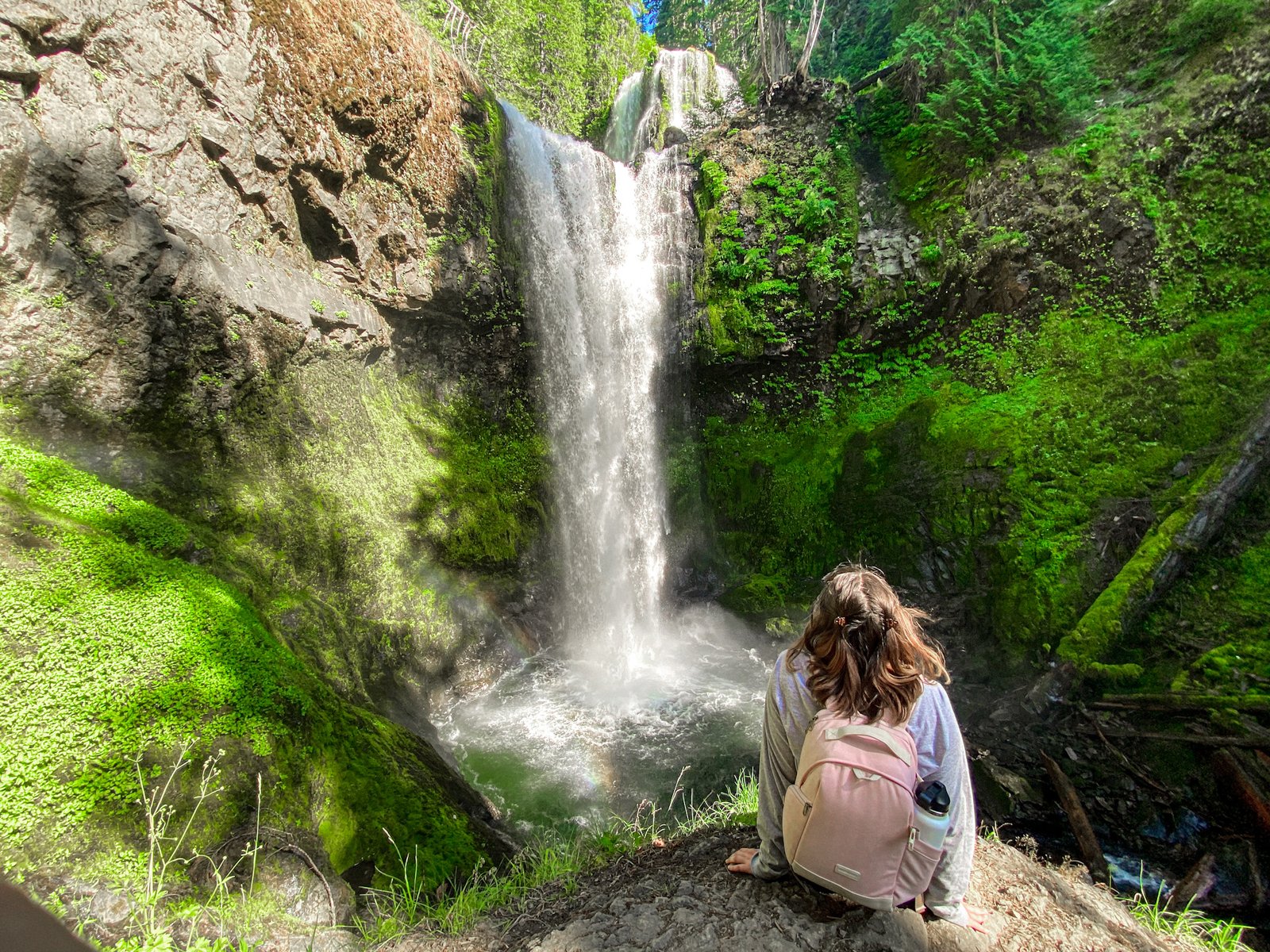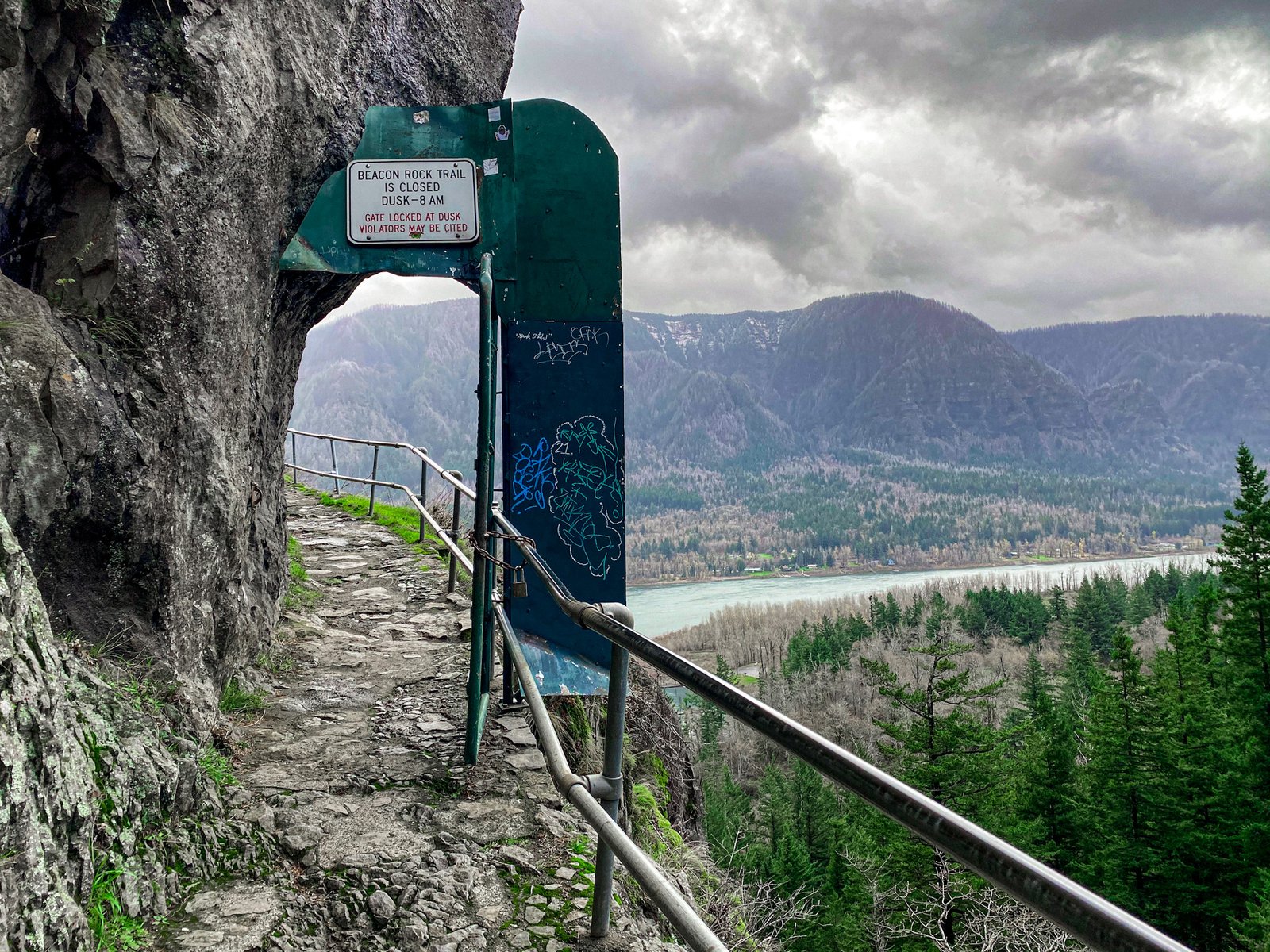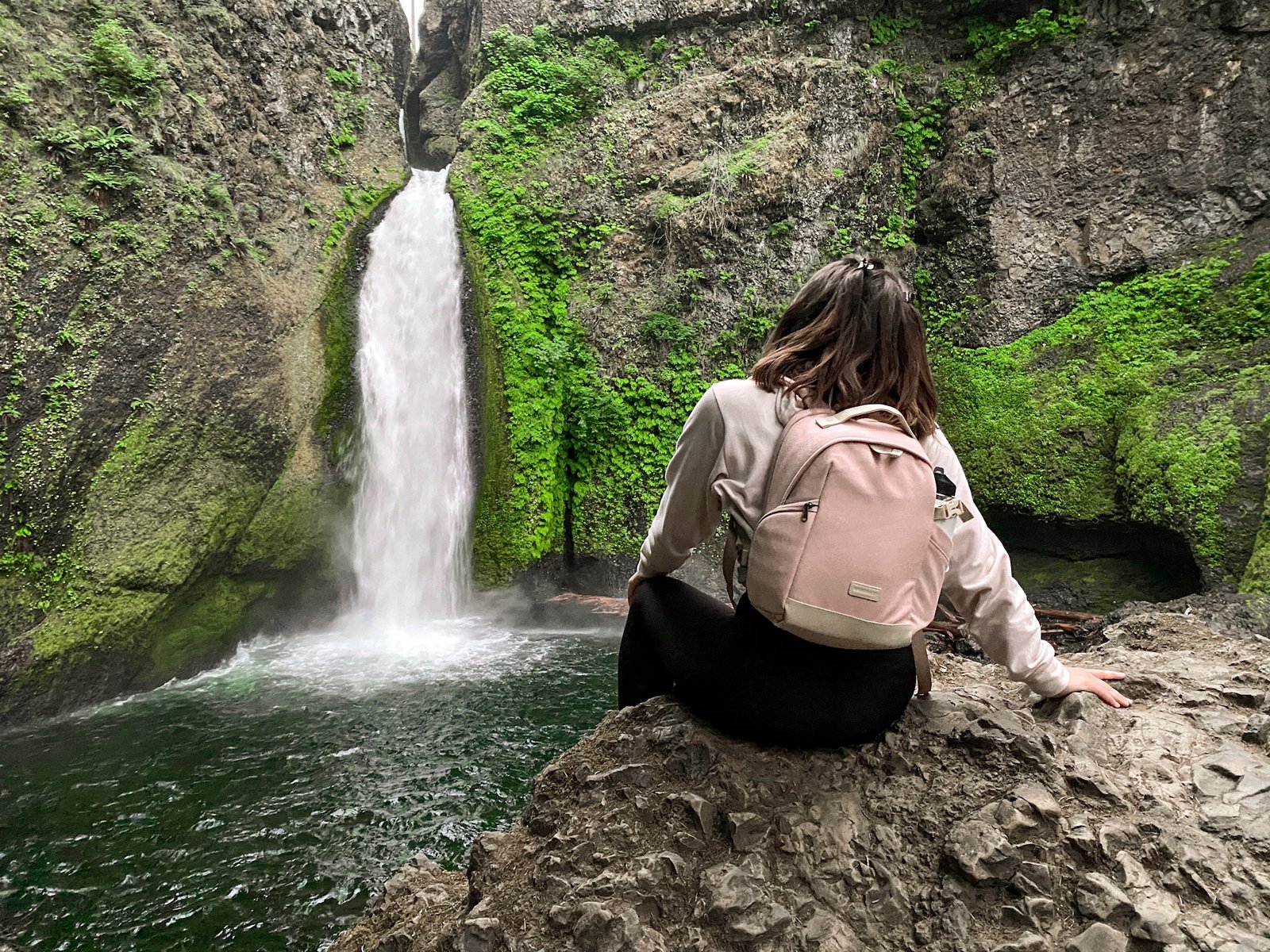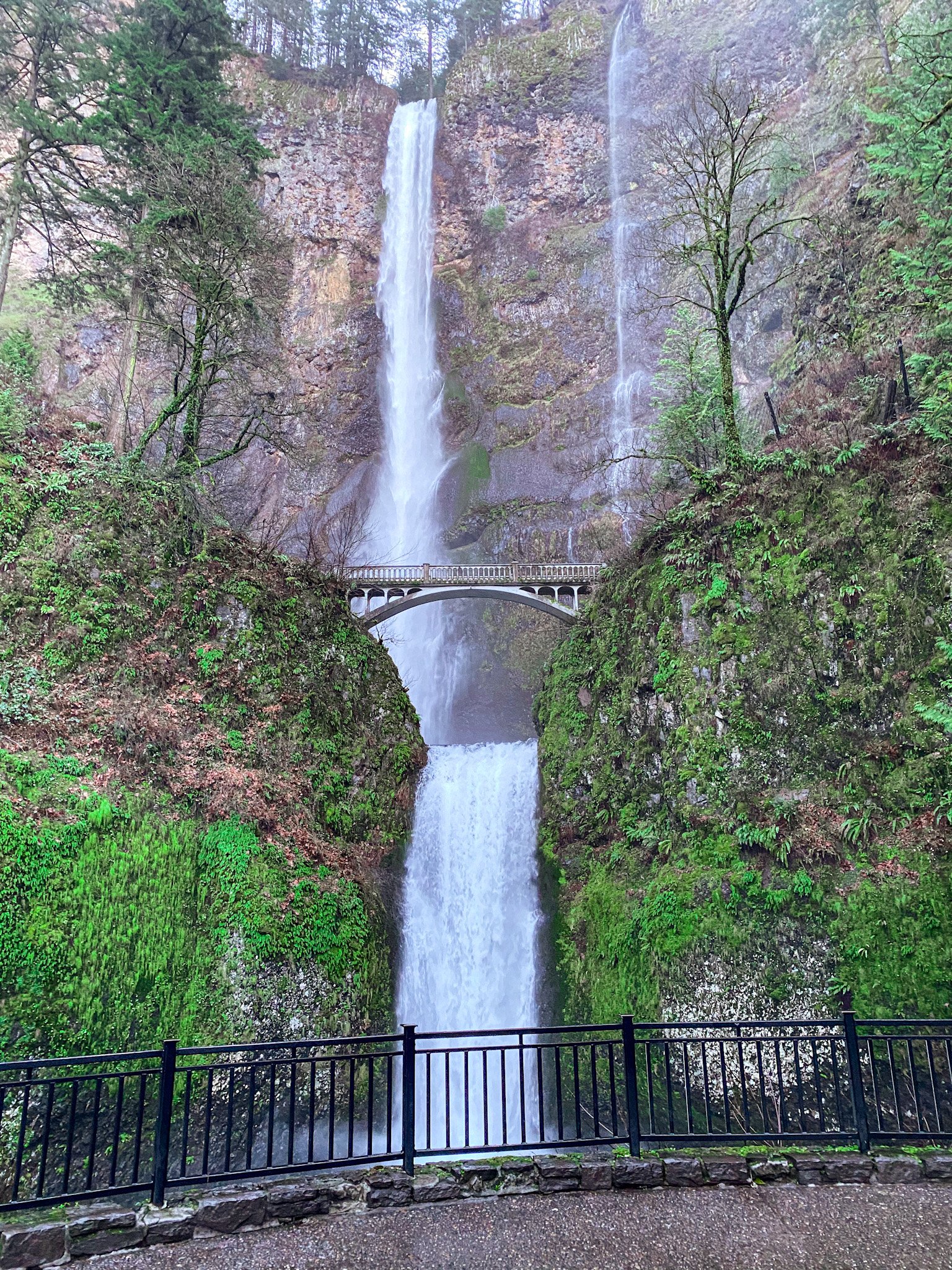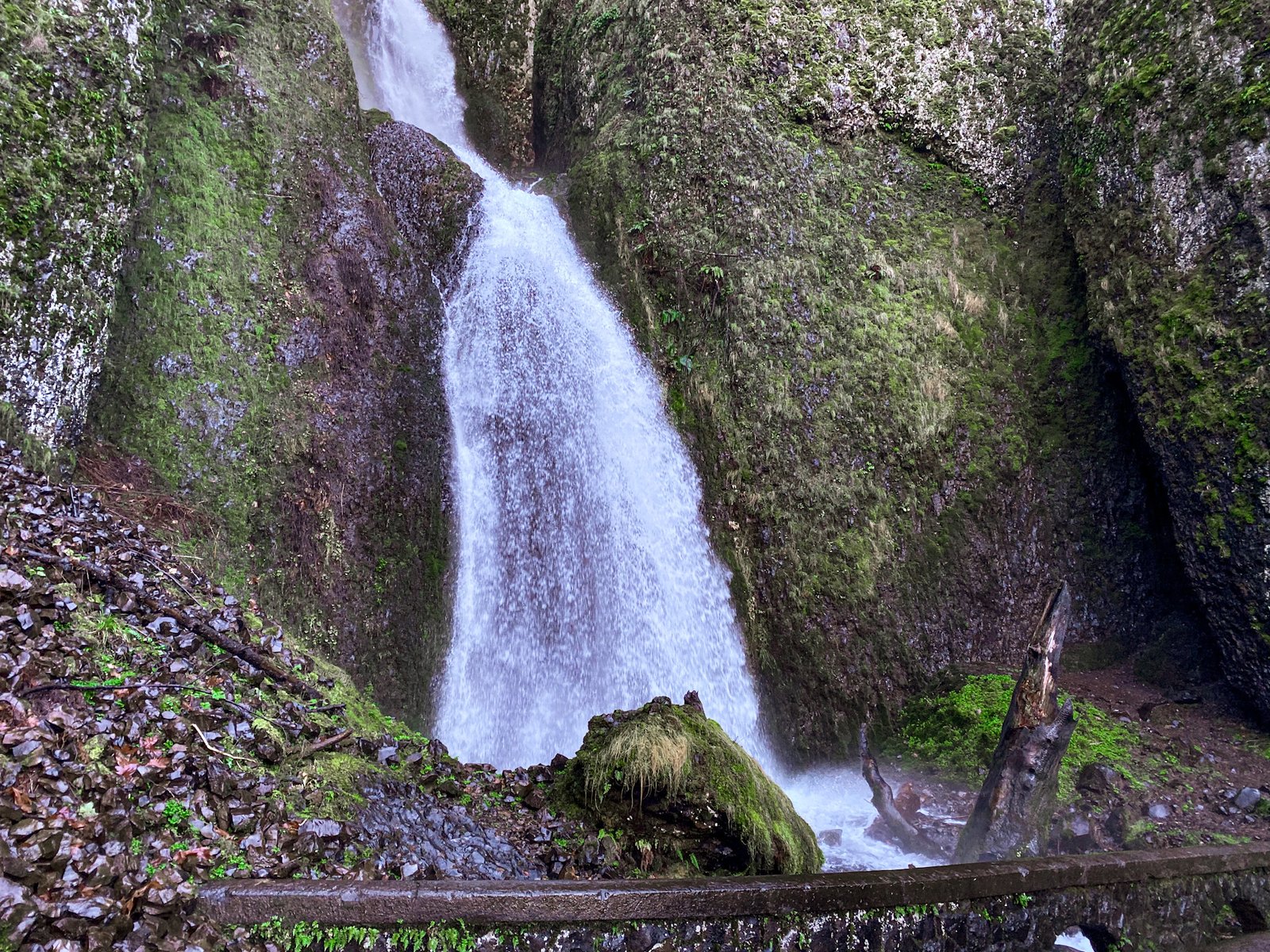The Columbia River Gorge is a 90-mile-long Canyon that runs just East of Portland. There is a Washington side to the gorge, as well as an Oregon side. This region runs along the Columbia River, as the name implies, and features nearly 100 waterfalls and a variety of different hikes. You can get lost in the hundreds of miles of trails within the gorge, which makes it hard to pick the best hikes when visiting. Today I’m sharing the best hikes in the Columbia River Gorge. I tried to provide a variety of hikes perfect for all ages, abilities, and experiences. I hope you find the perfect hike for your trip!
The Best Hikes in the Columbia River Gorge
Washington
1. Falls Creek Falls
A personal favorite waterfall of mine is Falls Creek Falls. Although this waterfall is a bit further away from the river, I would still classify this as a part of the Columbia River Gorge. This waterfall is around 5.3 miles with an elevation gain of 1,118 ft. This is a loop and is best used from March until November. No pass is required to park. If you’re going there looking to take photos, when the sun is higher in the sky it can create a lot of shadows. But, this waterfall is one of the best in the Gifford Pinchot National Park (second to Lewis River Falls). I do have a post all about Falls Creek Falls, so if you want all the info for this hike, click here.
2. Beacon Rock
Beacon Rock is a shorter hike to the top of a monolith with a great view of the Columbia River, as well as the Oregon side of the Gorge. This hike is only 1.5 miles and has an elevation gain of 574 ft. A discovery pass is required for this hike, or you can pay $5 for day use. This trail is open year-round, but be sure to check out the state park website to make sure there are no closures. I have a post for Beacon Rock State Park which you can find here.
3. Dog Mountain
Dog Mountain is a more challenging hike, but one of the best places to find wildflowers on the Washington side of the Columbia River Gorge. It’s also a great workout! This hike is 6.5 miles long and has an elevation gain of 2,988 ft. It’s best used from March until November, but wildflowers can be found between March and August. During peak wildflower season (April 24th- June 13th), there is a permit that is required on Saturdays and Sundays. A NW Forest pass is required for parking.
4. Cape Horn
This hike is a 7.5 mile hike with an elevation gain of 1587 ft. No parking pass is required for this hike. A portion of this trail is closed each year from February to July due to falcon nesting. During the rainy season this trail does get muddy at the bottom, so make sure you pack your waterproof hiking boots because you might be wading through puddles. During the closure, you will need to hike out and back, however in July you can complete this hike in a loop.
5. Larch Mountain
Larch Mountain is located across from Beacon Rock and is in the Beacon Rock State Park. This hike is 5.6 miles and has an elevation gain of 1150 ft. This hike also passes by two different waterfalls. A discovery pass is required for parking. I do have a post with all the information you need for this hike and you can find it here.
Oregon
1. Wahclella Falls
Wahclella Falls is a great spot for photographers. This hike is on the shorter side and does not have a lot of inclines. Although there are some steeper edges, I think this would make a great hike for older kids who can remain on the trial. Since the Eagle Creek fire in 2017, there are some burns on the trees, however, this hike is still beautiful and the waterfall at the end is a classic! This hike is 1.9 miles and has an elevation gain of 223 ft and requires a NW Forest Pass of $5 entry fee.
2. Multnomah Falls
Multnomah Falls is one of the most popular hikes in the Columbia River Gorge. This waterfall is the tallest waterfall in Oregon. Multnomah Falls is a big tourist destination, but if you haven’t been, it’s a great hike to try. This hike is 2.4 miles and has an elevation gain of 810 ft. There is a lodge at the bottom with a cafe and a gift shop. During the summer during the peak visiting time, there is a reservation that is required (reserve here). The main parking lot and backup parking lot in the past (pre-reservation) have filled up fast.
3. Angel’s Rest
This hike is 4.5 miles and has an elevation gain of 1476 ft. This trail is best used from April to October. Lately, there have been a lot of break-ins at the trailhead, so keep that in mind if you’re wanting to hike this trail. No parking pass is required, but this parking lot can get filled up on the weekends later in the morning. The end of this hike has a great view of the Columbia River and the gorge on the Washington side.
4. Latourell Falls
The hike to this waterfall is a 3-mile trail with a 728 ft elevation gain. This hike is best used from May until October. During the rainy season, this trail can get pretty muddy. No permits are required for this hike. I personally like pairing this hike with another waterfall hike like Elowah Falls (currently closed) or Wahclella Falls since they are near each other and both fairly short.
5. Eagle Creek
One of my favorite hikes is from Eagle Creek to Tunnel Falls. You can go further, however, if you do then you might want to make it an overnight trip. Eagle Creek to Tunnel Falls is 11.3 miles and has a 1778 ft elevation gain. If you’re looking for a shorter hike, you can try Eagle Creek to Punchbowl falls which is only 4.7 miles and has a 1046 ft elevation gain. A NW Forest pass is required to park at the trailhead. It can get muddy during the rainy season. This hike did have a fire back in 2017 and some of the damage can still be seen on the trees. However, a lot of brush has grown back and it’s still beautiful. It’s still a great hike one should do if you’re living in the area.
6. Wahkeena Falls
If you’re looking for a longer hike to add on to Multnomah, Wahkeena is the perfect addition. The Multnomah to Wahkeena loop is 6.5 miles and has an elevation gain of 1751 ft. No fees are needed for parking at the Wahkeena Falls trailhead, or if you decide to park at the Multnomah trailhead. This trail is best used from April to October. However, if you grab a pair of waterproof hiking boots, you should be fine to hike this trail any time of year!
MY HIKING + CAMPING FAVORITES
Here is some of my favorite gear to bring with me on hikes that I use:
- Hiking boots: Lowa Renegade GTX Women’s Mid Hiking Boots (durable, waterproof, comfortable)
- Water bottle: 32 oz Wide Mouth Hydroflask
- Camera: Canon Powershot G7x Mark II Digital Camera (perfect small and portable camera for hiking)
- Camera bag: BAGSMART Camera Backpack in Pink Canvas
- Daypack: Osprey Daylight Hiking Daypack
- Tent: REI Co-op Passage 2 Tent
- Backpack: Kelty 44L Rewing
- Camping + Backpacking Stove: Jetboil & Coleman Portable Butane Stove
For more PNW-related posts, check out some of my previous posts below.
- Marymere Falls: What to Know Before Hiking
- Moulton Falls Regional Park
- Lewis River Falls | Trail Route, Hiking Tips + Best Time to Visit!
That’s it for my list of the best hikes in the Columbia River Gorge. The Columbia River Gorge is somewhere that you can visit year-round for hikes. I hope you found some new hikes to add to your list if you are visiting the area!
Thank you so much for reading! If you want to follow along on my hikes and get notified when I post new posts, be sure to follow my Instagram @maddie_deer here or like my Facebook page here.
